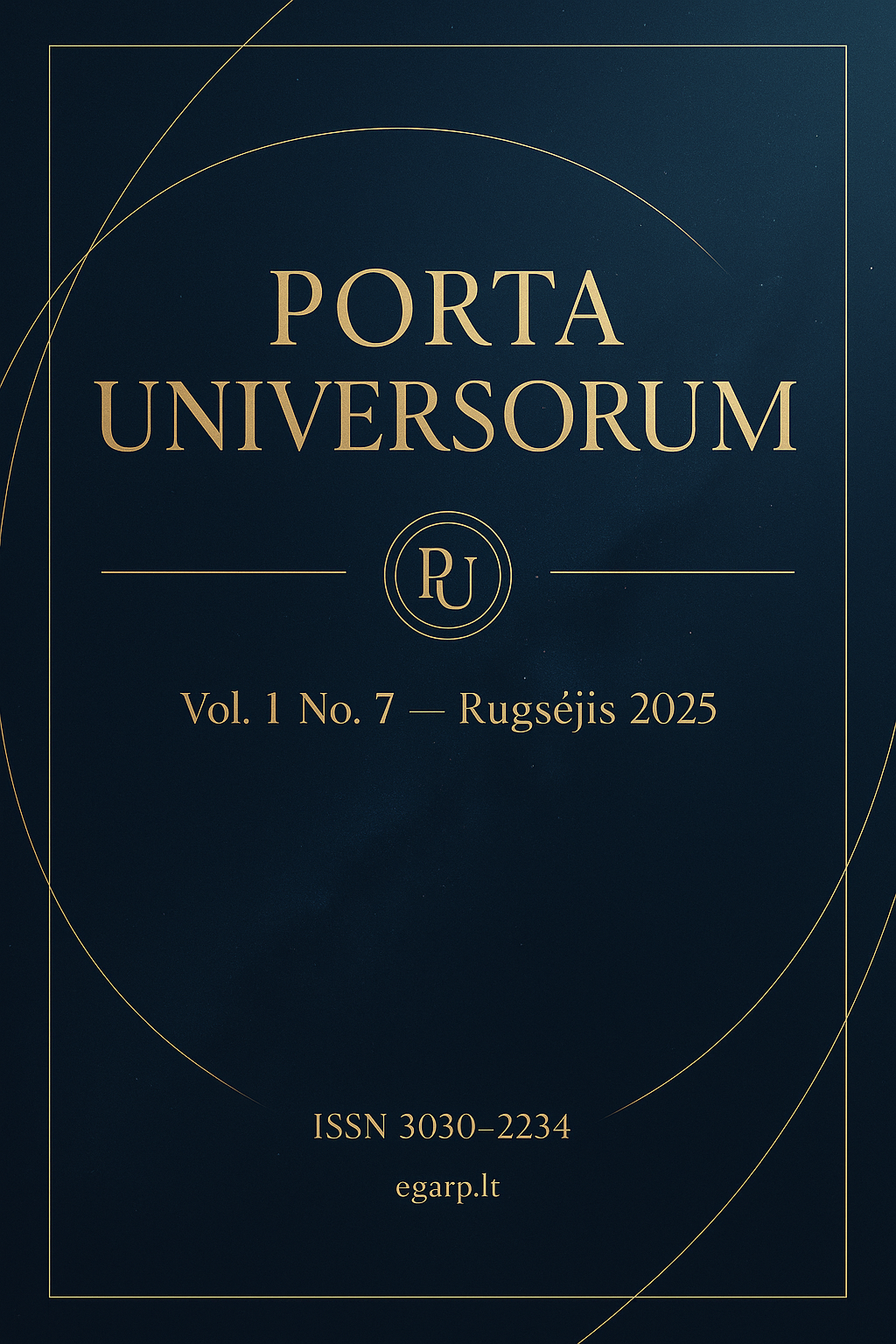The Role of Chorus in Musical Theatre
##semicolon##
https://doi.org/10.69760/portuni.0107013##semicolon##
chorus##common.commaListSeparator## musical theatre##common.commaListSeparator## drama##common.commaListSeparator## dance##common.commaListSeparator## classical##common.commaListSeparator## acting##common.commaListSeparator## liberettoSantrauka
The chorus has been a foundational element in theatrical tradition since ancient Greece, where it served as a narrative and moral guide. In the context of modern musical theatre, however, the chorus has evolved into a multifaceted performance ensemble that contributes significantly to the narrative, emotional, social, and aesthetic dimensions of a production. This study explores the complex roles played by the chorus in musical theatre through a qualitative analysis of literature and selected case studies, including Les Misérables, West Side Story, Hamilton, Rent, and Hadestown. Using a thematic content analysis approach, the research identifies four primary functions of the chorus: narrative support, emotional amplification, sociopolitical representation, and aesthetic enhancement. The findings reveal that the chorus is not a secondary or decorative element but a central storytelling mechanism that engages audiences and deepens dramatic impact. Furthermore, the paper highlights the chorus’s capacity to embody collective identities, reflect political themes, and enhance performative spectacle. The discussion also emphasizes the need for greater recognition of ensemble labor in both academic and professional contexts. This study contributes to ongoing scholarship in musical theatre by reasserting the importance of the chorus as a dynamic, expressive, and ideologically significant force within the genre.
##submission.citations##
Ahmedova, G. (2025). Theatrical Structures and Performance Traditions in Azerbaijani Folklore. EuroGlobal Journal of Linguistics and Language Education, 2(3), 74-82.
Bernstein, L., & Sondheim, S. (1957). West Side Story [Musical]. New York, NY: Broadway Theatre.
Brockett, O. G., & Hildy, F. J. (2014). History of the theatre (11th ed.). Pearson.
Everett, W. A., & Laird, P. R. (2008). The Cambridge companion to the musical. Cambridge University Press.
Gulkhara, A., & Farzaliyeva, E. (2025). Theatre as a Reflection of Social Change: How Dramatic Arts Capture Cultural Shifts and Historical Transformations. Acta Globalis Humanitatis et Linguarum, 2(1), 254-261.
Gulkhara, A., & Kamran, G. (2025). The Role of Translation of Scene Language in Intercultural Communication. Porta Universorum, 1(7), 104-113.
Knapp, R. (2005). The American musical and the formation of national identity. Princeton University Press.
Larson, J. (1996). Rent [Musical]. New York, NY: Nederlander Theatre.
McMillin, S. (2006). The musical as drama. Princeton University Press.
Miller, S. J. (2007). Strike up the band: A new history of musical theatre. Palgrave Macmillan.
Miranda, L.-M. (2015). Hamilton [Musical]. New York, NY: Richard Rodgers Theatre.
Mitchell, A. (2016). Hadestown [Musical]. New York, NY: New York Theatre Workshop / Walter Kerr Theatre.
Sadikhova, S. (2024). Contrasting Splendor: A Comparative Study of Baroque and Classical Styles in Visual Arts. Acta Globalis Humanitatis et Linguarum, 1(2), 144-154.
Schonberg, C.-M., & Boublil, A. (1980). Les Misérables [Musical]. London, UK: Royal Shakespeare Company.
Symonds, D., & Taylor, M. (2014). Gestures of music theater: The performativity of song and dance. Oxford University Press.
Wolf, S. (2011). Changed for good: A feminist history of the Broadway musical. Oxford University Press.
##submission.downloads##
Publikuota
Numeris
Skyrius
##submission.license##
##submission.copyrightStatement##
##submission.license.cc.by-nc4.footer##License Terms
All articles published in Porta Universorum are licensed under the Creative Commons Attribution–NonCommercial 4.0 International License (CC BY-NC 4.0). This license permits:
-
Sharing (copying and redistributing the material in any medium or format),
-
Adapting (remixing, transforming, and building upon the material),
-
for non-commercial purposes only,
-
with proper attribution to the original author(s) and source.
Commercial use of the material is not permitted without prior written permission from the publisher.




